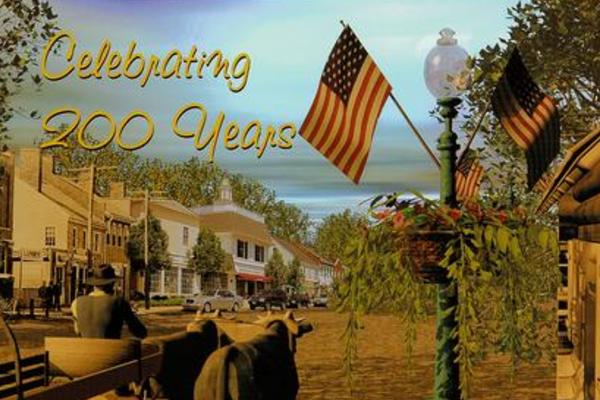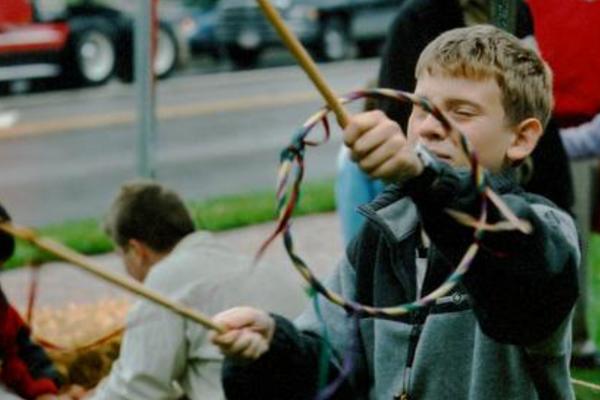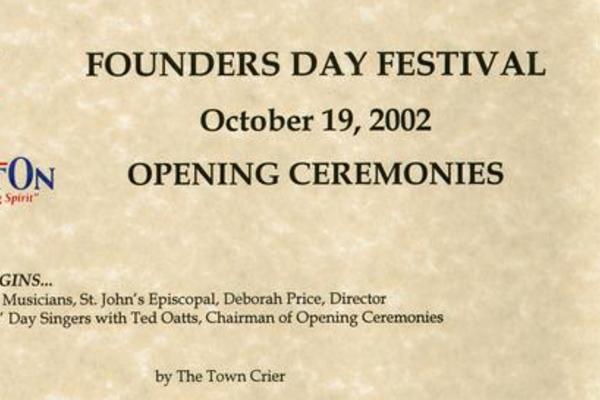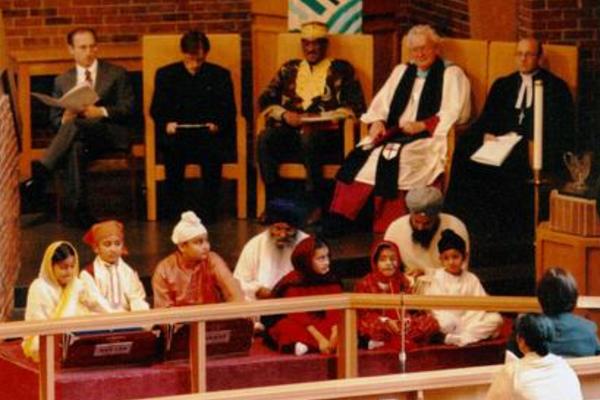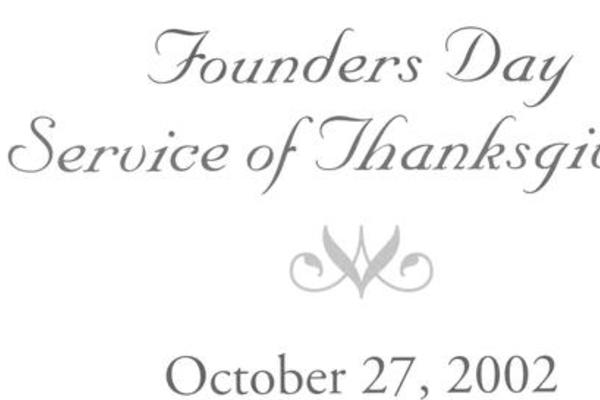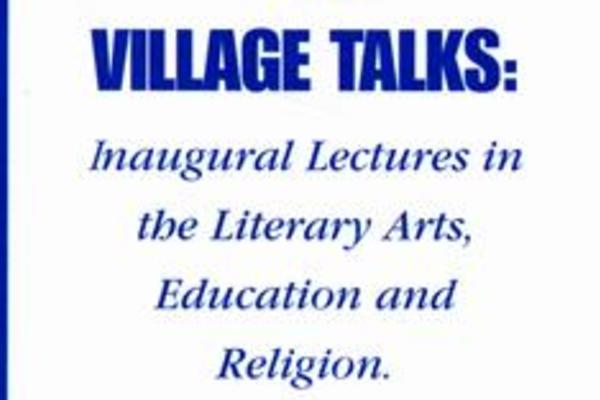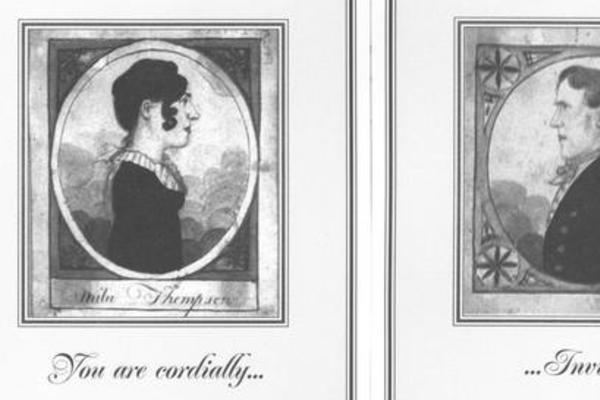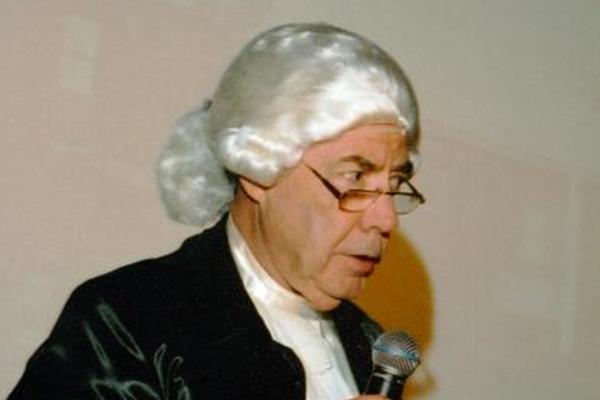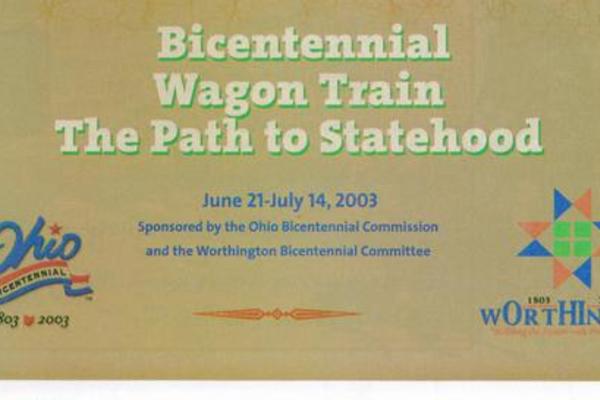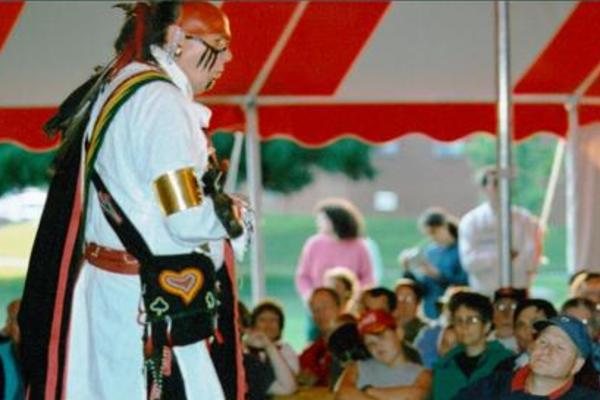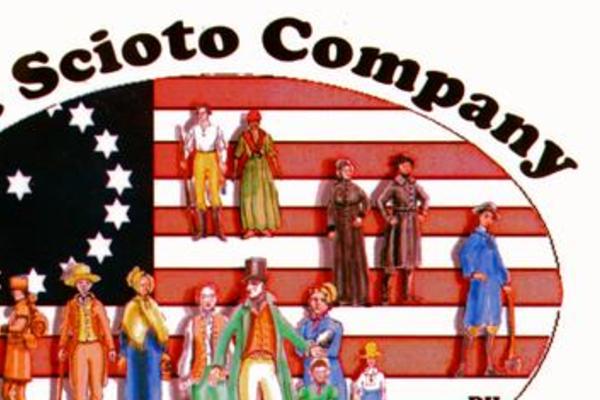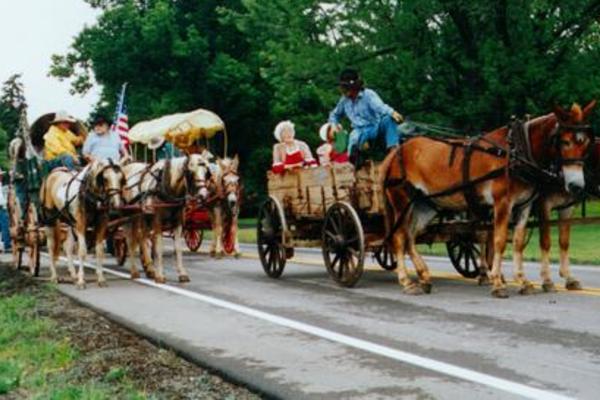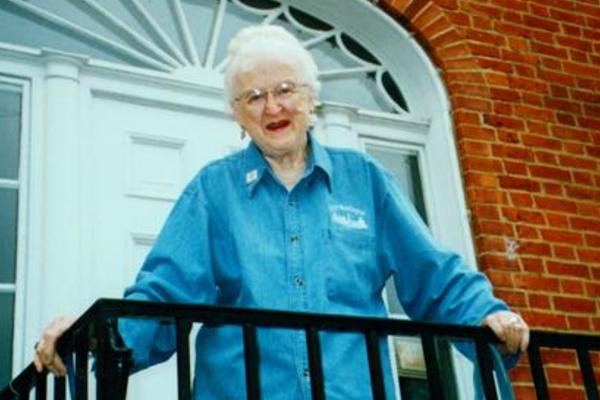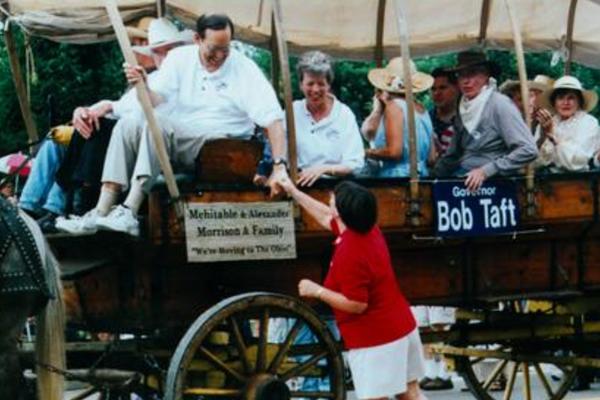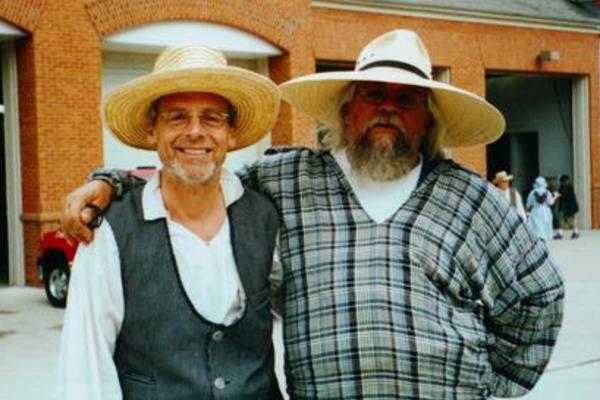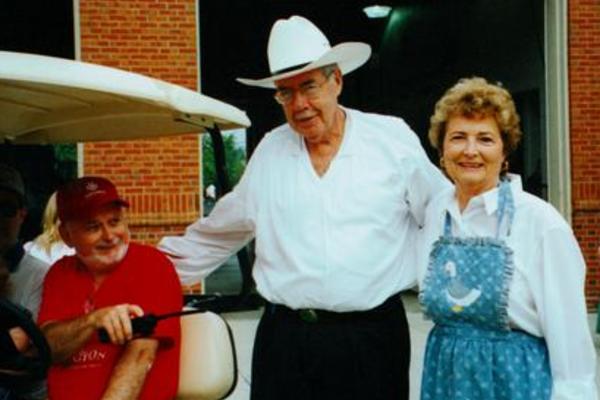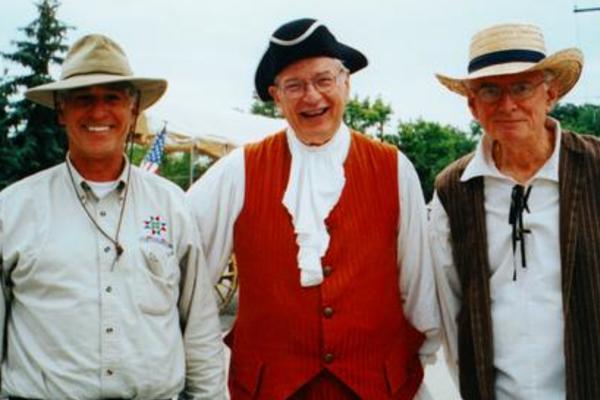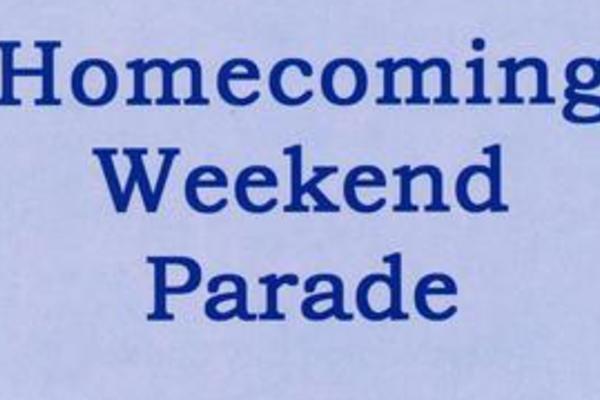Thursday,
June 24, 2004
10:49am
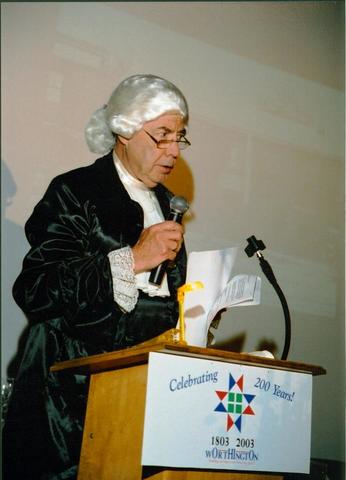
The community of Worthington's pioneering spirit has been showcased throughout the yearlong Bicentennial Celebration with a series of signature events that honor the past and will create a legacy for the future. Planning for Worthington's Bicentennial Celebration began in 1998, with a committee of Worthington residents representing nearly fifty community organizations. A seventeen member Steering Committee was formed in 1999, with six subcommittees. The Major Events subcommittee planned the Bicentennial signature events, which were developed from approximately 200 ideas brainstormed by the initial committee that was appointed by City Council in 1998.
- This brochure, developed by the Publicity and Public Relations subcommittee of the City of Worthington's Bicentennial Steering Committee, details ten signature events of Worthington's yearlong Bicentennial Celebration. Planning for the Bicentennial began in 1998 when Worthington City Council appointed a committee of residents representing approximately 50 community organizations. A Steering Committee was formed in 1999, and subsequently subcommittees were formed. The Major Events subcommittee refined over 200 event ideas into the major events described in this brochure.
- A child plays a game, popular with children at the time of Worthington's founding in 1803. History came alive on the northwest quadrant of the Worthington Village Green at the Founders Day Festival 2002, with demonstrations of pioneer life on the Ohio frontier.
- The City of Worthington's Bicentennial celebration kicked off with a Opening Ceremonies at the Founders Day Festival in October, 2002. The day's activities were held on the Village Green and began with opening ceremonies in the morning. This program provides details for the opening ceremonies which honored Worthington's heritage. The Official Theme Songs of the Worthington Bicentennial Celebration, “The Bells of Worthington” and "On the Village Green", composed by Eric Gnezda were debuted.
- The first of two Founders Day Services of Thanksgiving was held Sunday, October 27, 2002. Hundreds of people gathered together at the Village Green, proceeding south on High Street to Worthington United Methodist Church for the service. Religious leaders from ten denominations in the community took part in the service, including Rev. Alan Sippel (Worthington United Methodist Church), Rev. Glenn Zorb (All Saints Lutheran Church), Rev. Mark Feldbush (Worthington Seventh-day Adventist Church), Rev. Joseph Klee (St. Michael Roman Catholic Church), Rev. Arthur C. Hadley (St. John's Episcopal Church), Rabbi Gary A. Huber (Congregation Beth Tikvah), Rev. Hurdie Billingslea (St. John A.M.E. Church), Granthi Giani DilBagh Singh (Gurdwara Sahib, Sikh Temple), Rev. Philip Hazelton (Worthington Presbyterian Church), and Rev. Fred Wiese (Gethsemane Lutheran Church).
- The interfaith service, organized by the Worthington Pastors Association brought hundreds of people together to celebrate Worthington's heritage and give thanks to the community's founders. Two musical anthems were commissioned for the service, composed by Dr. Marshall H. Barnes and Deborah Governor.
- A three-part lecture series focusing on core values of Worthington's founders was one of the City's signature Bicentennial events. Topics of the Village Talks include literary arts, education and religion, reflecting the establishment of a school, church and library when the village was founded in 1803. Speakers for the lecture series were Frederick Busch, Jerry Sue Thornton, and Paul Kittner. The Village Talks took place at the Jessing Center at the Pontifical College Josephinum.
- One of the signature events for Worthington's Bicentennial was the Heritage Ball. This invitation incorporates images of profile portraits from a New Year's Eve ball held in Worthington in 1817. Guests attending the Heritage Ball were encouraged to dress in period costume. The event took place at the Worthington Community Center on February 22, 2003. Proceeds benefited the Worthington Educational Foundation, which will continue to host Heritage Balls annually.
- Lou Goorey, Co-Chair of the Worthington Bicentennial Celebration and City Council President delivered a toast at the Heritage Ball. The toast harkened back to Worthington founder, James Kilbourn's letter to Ohio Senator Thomas Worthington in February, 1804. Kilbourn's letter recounted a series of toasts delivered at the community's first Christmas celebration, one of which described the decision to name the Village after Senator Worthington.
- The Bicentennial Wagon Train was a signature event of both the Worthington Bicentennial and Ohio Bicentennial celebrations. The Wagon Train honored the early settlers of Worthington and Ohio. The Wagon Train traveled through ten counties across the State of Ohio. It began in Martins Ferry near the Pennsylvania border on June 21, arrived in Worthington on July 5 for the Homecoming Celebration and parade, and continued on to commence in New Paris near the Indiana border on July 14. Participation in the Wagon Train was open to the public. Participants were encouraged to wear period costume and bring along an adventurous pioneering spirit. This brochure details the Wagon Train route, providing a brief history of the settlement of Ohio and tells participants what to expect on the journey.
- This hand fan doubled as a program detailing the Ohio Chautauqua, which took place over a span five days in Worthington (June 18-22, 2003). Each day brought an historic figure from Ohio's pioneer days to life in front of an audience. Costumed scholar/actors portrayed Johnny Appleseed, Margaret Blennerhassett, Mary Draper Ingles, Simon Kenton and Chief John Logan during separate performances which took place under a big tent on the front lawn of Thomas Worthington High School on Dublin Granville Road. Companion adult and youth programs were held at the Griswold Center, Old Worthington Library and Northwest Library each day of the Ohio Chautauqua. The Ohio Chautauqua in Worthington was presented by The Ohio Humanities Council in conjunction with the Worthington Bicentennial, with local support from Worthington Industries and Schoedinger Funeral Services.
- A large audience of all ages enjoyed scholar Dan Cutler's portrayal of Chief John Logan during the Ohio Chautauqua. His living history performance providing insight to the life of Chief Logan and his expereinces with settlers on the Ohio Frontier. This was the third of five performances held that week.
- One of Worthington's Bicentennial signature events was a new play written exclusively for the City of Worthington's Bicentennial celebration. "The Scioto Company" tells the story of the founding of Worthington by James Kilbourn. Performances were held during the month of July, 2003 at Thomas Worthington High School. The author of the script, award winning playwright and Emmy nominee Brian Burgess Clark was a 1979 graduate of Worthington High School. The cast and crew of the play, directed by Bronwynn Hopton (Theater Director for Thomas Worthington High School) consisted of local community members. This program provides a brief biographical sketch and photograph of each cast member.
- A signature event of both the City of Worthington and the State of Ohio's Bicentennial Celebrations was the Bicentennial Wagon Train: The Path to Statehood. The Bicentennial Wagon Train honored the state’s early settlers and recognized those whose courageous spirit led to the statehood of Ohio and the founding of the City of Worthington in 1803. The Wagon Train traveled across the State of Ohio from Martins Ferry in the east to New Paris in the west over 24 days, averaging approximately 12 miles per day. Participation in the Wagon Train was open to the public. Many Worthington community members traveled along either the entire route or portions of it. The Wagon Train arrived at the midpoint of its route in Worthington on July 5th, where it led the Homecoming Parade south on High Street from Worthington Galena Road to the Village Green, then west on Dublin Granville Road to Thomas Worthington High School.
- Jane Trucksis, Worthington Historical Society Curator, is pictured in front of the Orange Johnson House Museum on the second day of Worthington's Homecoming Celebration. She served on the Major Events Planning committee for the Worthington Bicentennial Celebration.
- In 1803 the Scioto Company brought books along with them to establish a lending library in their frontier Village of Worthington. Two hundred years later books traveled on the Bicentennial Wagon Train from Martins Ferry to Worthington. June White, Worthington school teacher traveled with the Wagon Train caring for the books along the entire route to Worthington, arriving on July 5th during the Homecoming Parade. The lead wagon with Governor and Mrs. Taft on board stopped in front of the library and June presented Worthington Libraries Director, Meribah Mansfield with the books.
- John Butterfield and "Tennessee" John Stewart are pictured in period costume at the fire station prior to the start of the Homecoming Parade. John Butterfield was the chairman of Worthington’s Bicentennial Wagon Train Committee and served on the Publicity and Public Relations and Major Events Planning committees for the Worthington Bicentennial Celebration. "Tennessee" John Stewart of muleskinner.com was the Wagon Train Trail Boss, responsible for leading the Wagon Train across the State of Ohio.
- Worthington Bicentennial Committee members are pictured in front of the fire station on the second day of Worthington's Homecoming Celebration. Left to right are Marty Jenkins (Homecoming Celebration Coordinator), Lou Goorey (City Council President and Worthington Bicentennial Steering Committee Co-Chair) and Lou Briggs (City Council Pro-Tem and Worthington Bicentennial Steering Committee Co-Chair). Lou Goorey and Lou Briggs show their pioneering spirit in period costume, ready to join in the Homecoming Parade. The Bicentennial Wagon Train entered the Homecoming Parade at Worthington Galena Road and High Street, leading the procession to Thomas Worthington High School.
- Worthington Bicentennial Steering Committee members (left to right) Charles H. Claibourne, George Harding IV and G. Courtney Chapman (City Council) are pictured enjoying the July 5th Bicentennial Homecoming Celebration. All three gentlemen rode on the Wagon Train that day.
- The Worthington Bicentennial Homecoming Celebration brought Worthington's history to life through an official Homecoming Parade on Saturday, July 5, 2003. The Homecoming Parade celebrated 200 years that shaped the community of Worthington, beginning with the founding of Worthington in 1803. The Bicentennial Wagon Train, which was a collaborative project of Worthington and State of Ohio's Bicentennial Commission, led the Homecoming parade through Worthington. Community organizations, neighborhoods, institutions and corporations participated with parade floats that highlighted historic moments in the community of Worthington. This program describes each of the parade entries. A start time of 10:03 a.m. was chosen for the parade in recognition of Worthington's founders' arrival date to their new home in the Ohio wilderness (October 1803, or 10-03). Following the parade, the Wagon Train units were on display at the July 5th homecoming celebration at the front lawn of Thomas Worthington High School before continuing their trek across the State of Ohio.

